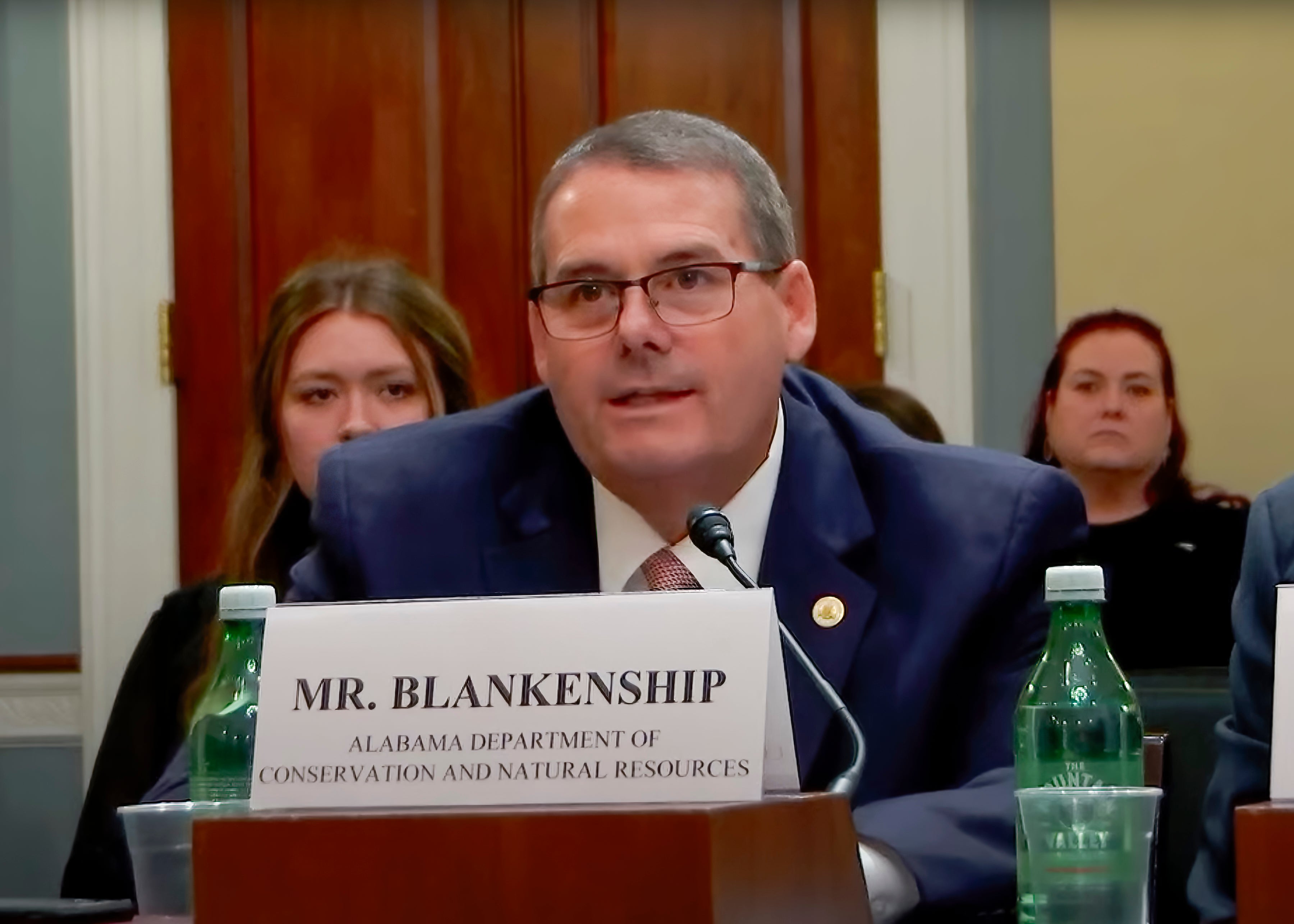By DAVID RAINER, Alabama Department of Conservation and Natural Resources
At the request of Alabama Representative Jerry Carl (R) and the House Natural Resources Committee, Conservation Commissioner Chris Blankenship traveled to Washington, D.C., last week to testify about the crucial funding Alabama receives from oil and gas leases through the Gulf of Mexico Energy Security Act (GOMESA). Commissioner Blankenship highlighted how the GOMESA funding positively affects the Alabama Gulf Coast’s resiliency and quality of life.
Congressman Carl said Commissioner Blankenship’s vast knowledge of Alabama’s coastal resources and conservation initiatives would provide the U.S. House of Representative’s Committee on Natural Resources with valuable insight on the impact of funding derived from oil and gas leases.
“It’s always a pleasure to have an Alabamian here in Washington,” Congressman Carl said. “Today, we’re fortunate to have Commissioner Chris Blankenship join us. With a wealth of experience since 1994 in the (Alabama) Department of Conservation and Natural Resources (ADCNR), he’s our go-to source for all things regarding natural resources and conservation. He will be diving into the nitty-gritty of the GOMESA funding and how it has a critical impact on Coastal Alabama projects, particularly in the underserved communities. Think water quality, public boating access and shoreside enhancement of parks, a true game-changer. Commissioner Blankenship will shed light on the challenges, like the GOMESA cap and the minimum proposed lease sales the next five years, affecting funding for both GOMESA and the Land and Water Conservation Fund project.”
The U.S. Department of the Interior’s 2024-2029 National Outer Continental Shelf (OCS) Oil and Gas Leasing Proposed Final Program significantly limits offshore oil and gas lease sales with only three potential sales in the Gulf of Mexico planning area and no new lease sales in Alaska.
For the first time there will be a two-year gap in leasing plans. Also, for the first time since 1958, no gas and oil lease sales will occur during the current calendar year. These revenues play an important role in various state conservation efforts and also provide funding for outdoor recreational access, hurricane protection and coastal infrastructure improvements while contributing to the Great American Outdoors Act.
Commissioner Blankenship, who was appointed to his position by Alabama Governor Kay Ivey in 2017, thanked the Committee for the opportunity to explain the positive impacts the Gulf of Mexico Energy Security Act of 2006 has had on our beautiful state. He explained that ADCNR is the state agency charged with leasing state water bottoms for exploration, development and production of oil, gas and other minerals and coordinating with the federal agencies on OCS activities.
“I grew up on Dauphin Island,” Commissioner Blankenship said. “Most all my life, we have had production from natural gas wells right off the shores of the island. Many of my friends I grew up with work in the oil and gas industry. Those good-paying jobs are an economic engine for coastal towns. The views of the platforms and work boats during the day and the amber glow of the lights of the rigs at night are a familiar sight from my hometown.”
Commissioner Blankenship testified that the amount of GOMESA revenue received is based on several factors and fluctuates annually.
“In years when lease sales have occurred, the distributions to Alabama through GOMESA revenue sharing are generally 50% higher than in years with no lease sales,” he said. “Since the Phase II revenue sharing formula was implemented in 2017, Alabama has received approximately $227 million. Just last year, we received almost $50 million to do good work!
“The GOMESA projects we have funded in Alabama have had a great impact on improving public access to our waterfront, increasing boating access to our waterways, creating some special places for outdoor recreation, improving coastal water quality, and providing critical scientific information that is needed to better protect and preserve Mobile Bay and the Gulf of Mexico and their tributaries.”
Commissioner Blankenship said outdoor recreation, especially recreation on the waterfront, is a huge part of the quality of life in coastal Alabama, and the projects funded by GOMESA include 15 shoreside waterfront public access and park improvement projects that will enhance the enjoyment that our residents and guests, with and without boats, experience on the waterfront and in the great outdoors.
“I am most proud of the commitment we have made to provide boating access using GOMESA and other funding,” he said. “GOMESA has funded 18 boating access projects in communities of diverse economic situations and will serve all our citizens, no matter their zip code.”
Commissioner Blankenship pointed out that undeveloped waterfront property availability is shrinking rapidly along the coast, making acquisition for parks and public access even more important.
“Governor Ivey has approved seven land acquisition projects that will create public water and recreation access in our two coastal counties (Mobile and Baldwin),” he said. “One project I would like to highlight is the Mobile Bay Western Shore Acquisition with 1,400 feet of bayfront. This is some of the last remaining undeveloped land that will provide public access along Mobile Bay. This project leverages the National Fish and Wildlife Foundation funded Saltaire Nature Preserve Project to really create a special large park space for Mobile County. This project is just one example of how we can use GOMESA in conjunction with other funding sources to do special and long-lasting work.”








